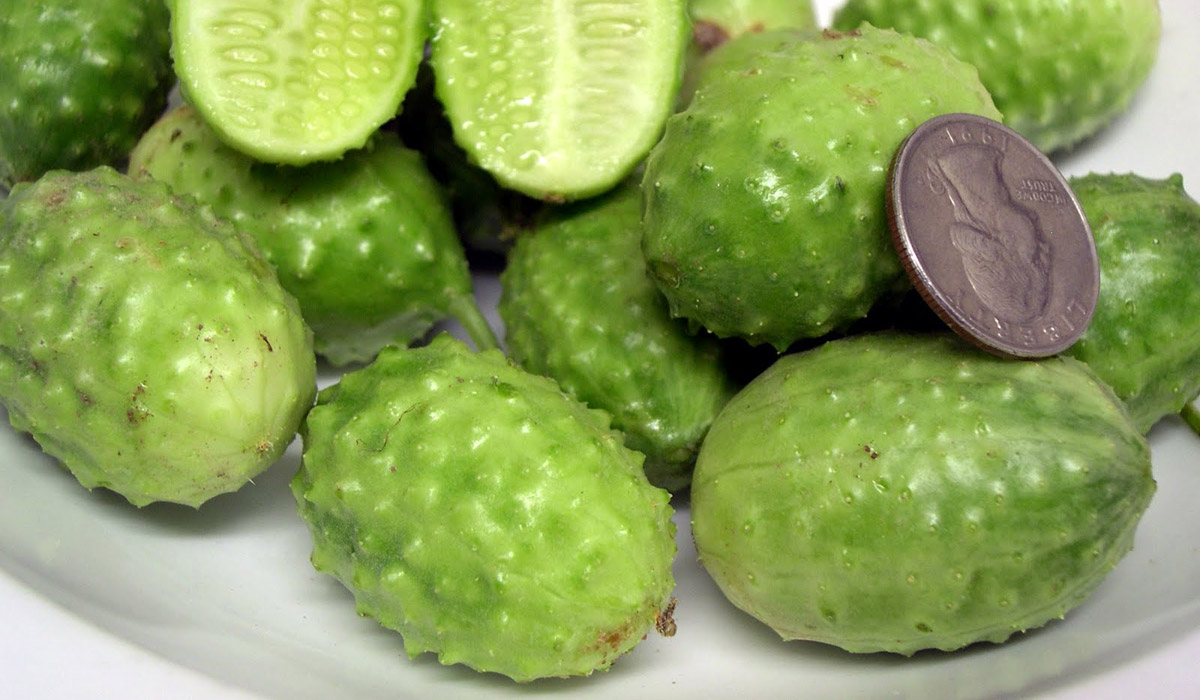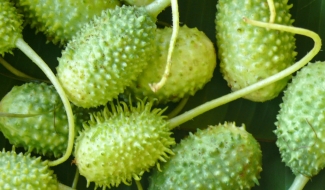History
 West Indian gherkin cucumbers (Cucumis anguria), bur gherkin, gooseberry gourd, West Indian gourd, wild cucumbers or maroon cucumber is called concombre des Antilles (West Indian cucumber) or massissi in Martinique. It is a climbing plant native to Africa, especially the southwest area. It was then taken by slaves in particular those from Angola to South America and the Caribbean. It was during the period of slavery that cucumber Caribbean entered into Martinique.
West Indian gherkin cucumbers (Cucumis anguria), bur gherkin, gooseberry gourd, West Indian gourd, wild cucumbers or maroon cucumber is called concombre des Antilles (West Indian cucumber) or massissi in Martinique. It is a climbing plant native to Africa, especially the southwest area. It was then taken by slaves in particular those from Angola to South America and the Caribbean. It was during the period of slavery that cucumber Caribbean entered into Martinique.
Varieties
 The number of varieties is unknown but it would be several. The fruit is different in the Caribbean or Africa. It is a creeping plant and branched long slender stems covered with stiff hairs. The palmate leaves are in three rounded lobes, rough to the touch, toothed and hairy underneath. Monoecious small yellow flowers bloom from June to September.
The number of varieties is unknown but it would be several. The fruit is different in the Caribbean or Africa. It is a creeping plant and branched long slender stems covered with stiff hairs. The palmate leaves are in three rounded lobes, rough to the touch, toothed and hairy underneath. Monoecious small yellow flowers bloom from June to September.
Numerous spiky fruits but not pungent like a chestnut bug. They are ovoid, long-stalked, of different colors, yellow longitudinal stripes, green or white or ivory.
The seeds are white, flat, pointed at each end.
West Indian gherkin likes cool soils, loose, rich in humus, warm weather in temperate and a sheltered and sunny exposure. We must pick the fruit before it is ripe when they are still young and green.
Health benefits
West Indian gherkin is known to be refreshing. West Indian gherkin was once used in traditional medicine to treat stomach infections.
Uses
 West Indian gherkin is eaten raw with vinaigrette. They can also be cooked in steam, in water or fried. They accompany the cod with tomatoes, onions, garlic and bouquet garni.
West Indian gherkin is eaten raw with vinaigrette. They can also be cooked in steam, in water or fried. They accompany the cod with tomatoes, onions, garlic and bouquet garni.
They also accommodate the Caribbean fritters, are eaten in salad dressing with parsley, pepper and tarragon.
We can confire the younger fruits in vinegar.
West Indian gherkin must be peeled, then removed its many seeds before cutting into strips or pieces.




